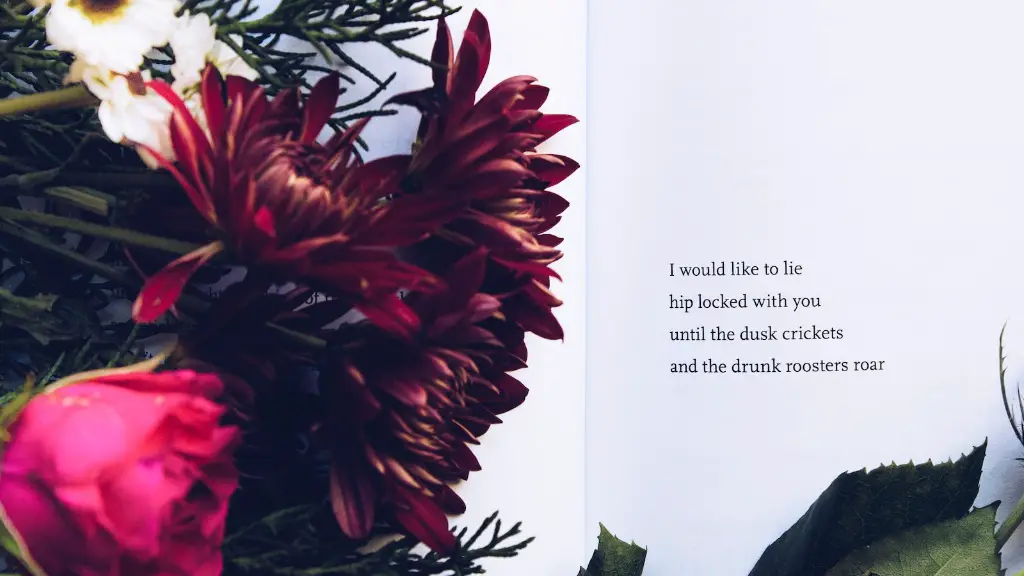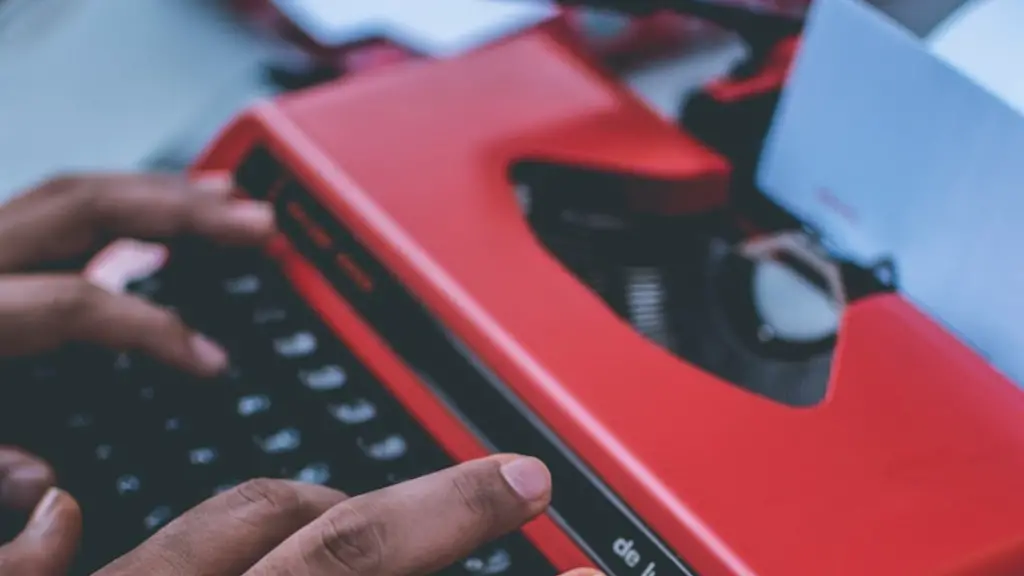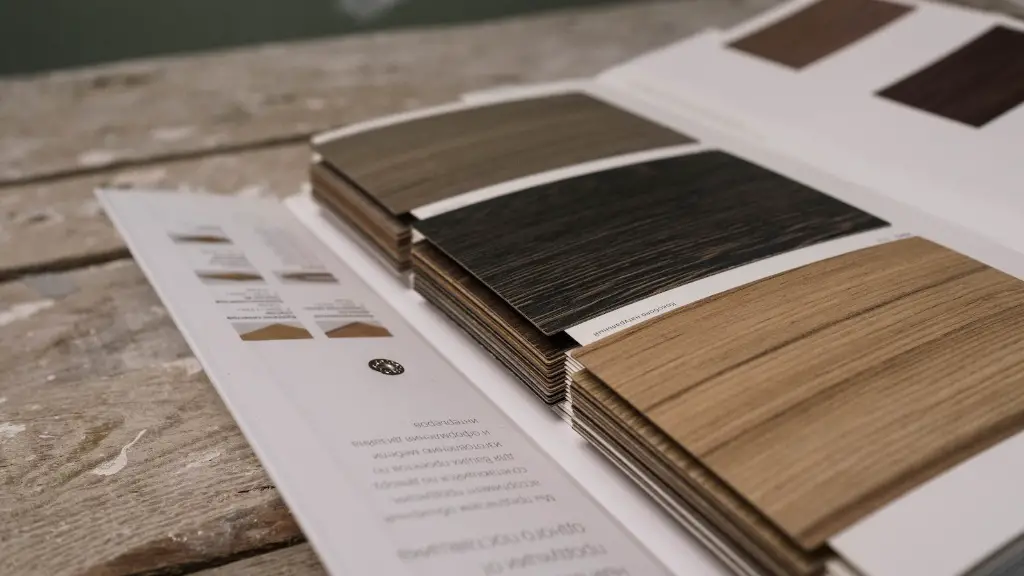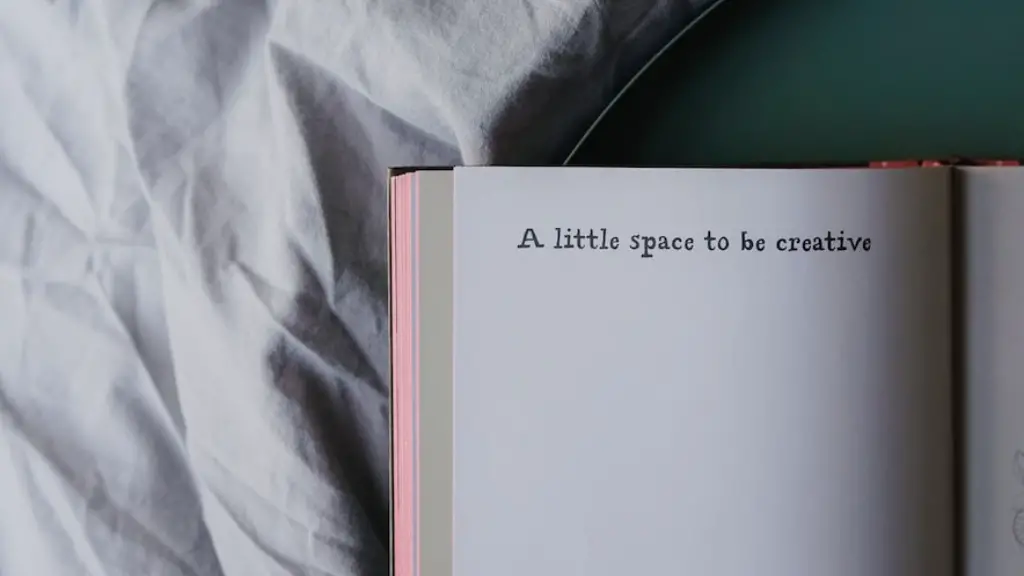Definition of Rhyme in Poetry
Rhyme in poetry is a memorable, musical quality that creates a sense of harmony and a sense of unity between the words and the ideas in a poem. Its purpose is to create a pleasing, lyrical effect that helps the poem flow more smoothly and to draw attention to certain words and ideas. Rhyme has been an integral part of poetics since its inception and has served to make poetry more memorable, enjoyable and impactful.
Rhyme typically occurs at the end of a line in a poem and involves words that sound similar or identical. For example, in the poem “Twinkle, Twinkle, Little Star,” the first and third lines begin with the same word, “twinkle”, and end with the same word, “star”. This is known as full rhyme or perfect rhyme.
However, there are also other forms of rhyme, including slant or imperfect rhyme, which is when the words share some of the same sounds or syllables but not all of them. Rhyme can also occur within the line, known as internal rhyme, such as in the poem “The Road Not Taken” by Robert Frost: “Two roads diverged in a yellow wood, / And sorry I could not travel both.” Here, “wood” and “could” rhyme with each other.
Rhyme is said to enhance the emotional resonance of a poem and make it more memorable. Research suggests that rhyme helps to make a poem more easily accessible to readers and can also help them to pick out important words and ideas more easily. This is likely because rhyme brings attention to specific words and makes them stand out from the rest of the poem. This can be especially useful when the poem is exploring a particularly difficult or abstract topic.
Types of Rhyme
Rhyme comes in many different forms and can be used in different ways. The two most common types of rhyme are end rhyme and internal rhyme. End rhyme occurs at the end of a line and is usually in the form of two words that share the same or similar sounds. Internal rhyme occurs within a line and involves words that contain similar or identical sounds.
However, there are also other types of rhyme that can be used to create different effects in a poem. Masculine rhyme, for example, is when the last syllable of each word contains the same sound. Feminine rhyme occurs when the final two syllables of each word share the same sound. Eye rhyme is when two words look like they should rhyme but actually don’t, such as “love” and “move”. Novelty rhyme is when the rhyme appears in unexpected places, breaking the rhythm of the poem.
The Uses of Rhyme
Rhyme can be used in a number of different ways in poetry. It can be used to create a more melodic quality in the poem and to make the poem more easily understood. While rhyme may not always be necessary, it can be a powerful tool for poets to use. By using rhyme, poets can add depth and complexity to a poem, making it more memorable and enjoyable for the reader. Additionally, rhyme can be used to emphasize key words and phrases and to draw attention to important ideas.
Rhyme also has a purpose in terms of structure. It can be used to divide up a poem into smaller sections or divisions, or to give it a sense of rhythm or flow. The structure of a poem can be significantly enhanced by the use of rhyme. It can also help draw the reader’s attention to certain words and concepts.
Conclusion
Rhyme is an important element of poetry. It has been used to create a more lyrical and memorable effect in poetry since its inception and has the power to make a poem more enjoyable and impactful for readers. Rhyme can be used in a variety of different ways in poetry, such as to emphasize key words, to draw attention to important ideas, and to provide structure to a poem. Ultimately, it is an essential part of any good poem and can be used to give it a unique and memorable quality.
The History of Rhyme
Rhyme has a long and varied history in literature. In Ancient Greek poetry, it was often used as a way to emphasize important words and to create a more lyrical effect. Throughout the Middle Ages, rhyme was used as a tool to make poetry more memorable and to make it easier to understand. In the Renaissance, poets began using rhyme in a more creative and sophisticated way, such as using it as a form of symbolism and metaphor. Rhyme has also been a popular tool in modern and contemporary poetry, as it can be used to draw attention to certain words and ideas and to give a poem a more enjoyable and impactful quality.
The Benefits of Rhyme
Rhyme can be a powerful tool for poets and readers alike. It has the potential to make a poem more enjoyable, memorable and impactful for readers. Rhyme also encourages readers to pick out key words and concepts, which can be helpful when exploring difficult or abstract topics. Additionally, rhyme can be used as a way to emphasize words and as a form of symbolism and metaphor. Ultimately, rhyme can be a valuable tool to make a poem more enjoyable and meaningful for readers.
The Challenges of Rhyme
Rhyme can be a difficult tool for poets to use. Finding the right words to rhyme can be a challenge, as there are often limited options. Additionally, using rhyme too heavily or too often can cause the poem to sound forced or too predictable. Finally, when using rhyme it is important to remember that it should be used to enhance the poem, not overwhelm it. When used correctly, rhyme can be a powerful and effective tool, but it should be used sparingly and to complement the poem.
Innovations in Rhyme
Many poets have experimented with different ways of using rhyme in their work. For example, poets such as Ezra Pound and T.S. Eliot used rhyme in a more experimental and unconventional way, employing a range of different techniques such as slant rhyme, internal rhyme and masculine and feminine rhyme. Other poets, such as Robert Frost and W.H. Auden, have employed more traditional forms of rhyme, introducing more traditional concepts such as regular meter and traditional word choices. Poets continue to innovate with rhyme to this day, employing a range of techniques to create a more lyrical and powerful effect in their work.
The Future of Rhyme
As poetry continues to evolve, so too will the use of rhyme. Poets will continue to experiment with different forms of rhyme and explore new ways of using it in their work. As technology advances, poets may also find new ways to use digital tools to create more interesting and complex forms of rhyme. Ultimately, rhyme will remain an important part of poetics for years to come and will continue to shape the way we think about poetry and its potential.
The Relevance of Rhyme
Despite the many changes in poetry over the years, rhyme remains an important element. As technology and society continue to evolve, the way we think about and use rhyme will no doubt change as well. However, rhyme is likely to remain an integral part of poetry in the future. It can be used to make a poem more accessible, memorable and powerful and as a way to emphasize certain words and ideas. For these reasons, rhyme is likely to remain an important and relevant element in poetics for years to come.



